Km 5750-6960. Tierra del Fuego
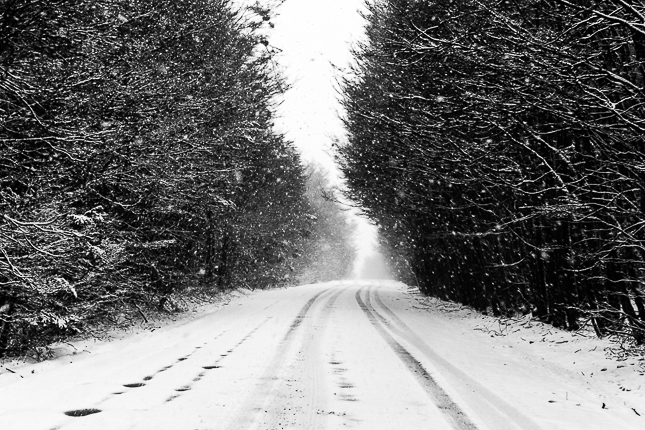
National Route 3. Tierra del Fuego National Park. 2017 © Leo Micieli
Km 5750-6960. Tierra del Fuego. February 7th, 2018.
This is the end of the road, and all of the roads. There's no more paths to be traveled by. Beyond this point it is extended the absolute solitude, the rawest nature, a pinch a little bigger of the Infinite. Here, landscape and vertigo use to be the same.
Now there are no more options but to turn back towards the North, going by the same steps or others, but always way up in the map. It's time and place to finish a long episode that started exactly one year ago. Time to release the burden, to breathe the icy and pure air of the bay and to continue the trip, weightless. In this end of the World I walk on the last steps that this land allows me, I leave behind whatever it has to be left, I see for the last time what is no longer part of me. Like the character from that old movie, an African native who sees how his tribe has been corrupted by a simple soda bottle found in the desert, and decides to go to his own end of the World in order to throw it away, and free them from the curse that affects their lives.
Tierra del Fuego is the last milestone. There's nothing like this place all over Patagonia. There's no cities beyond its shores. Its poetic name refers two of the elements, the other two are not named but exist. There's no way to escape from the elementary. It's better this way, so we can see how humans we are when circumstances are simplified to the minimum expression.
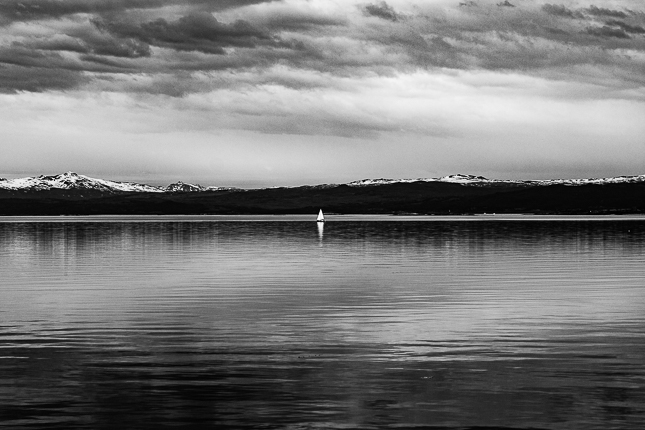 Ushuaia. Tierra del Fuego. 2017 © Leo Micieli
Ushuaia. Tierra del Fuego. 2017 © Leo Micieli
The Isla Grande de Tierra del Fuego shows features that are not only different but even opposite to the rest of the Patagonian territory, starting with it's an island. Geographic and social aspects, currents and historical, are constants all along Patagonia, but there are others that are very particular from this place and that makes it have a different personality, so to say.
Arriving here implies to go through customs, migrations and scanners, to cross the border to Chile, to go on board of a boat with your vehicle in order to get the other side of the Strait of Magellan, and afterwards to do the reverse process and cross again the border to Argentina. After all of this, the feeling is that this is just beginning, and there's too much left ahead.
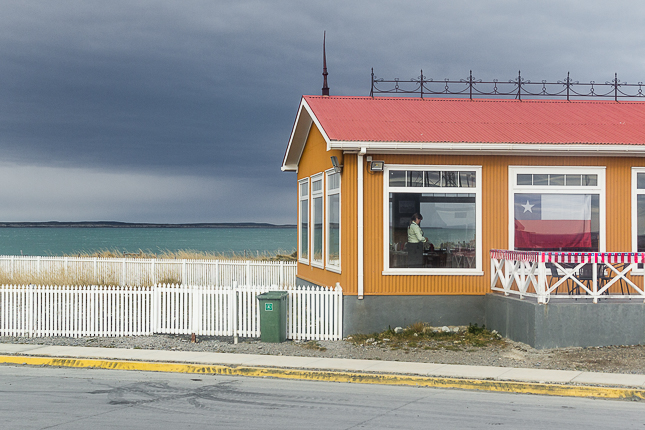 Strait of Magellan. Chile. 2017 © Leo Micieli
Strait of Magellan. Chile. 2017 © Leo Micieli
 Strait of Magellan. Chile. 2017 © Leo Micieli
Strait of Magellan. Chile. 2017 © Leo Micieli
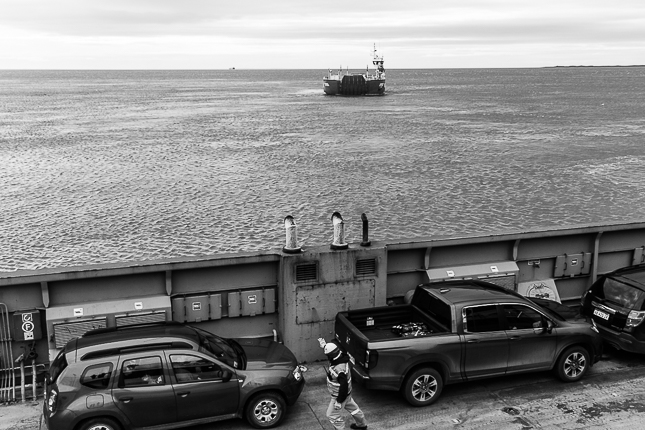 Strait of Magellan. Chile. 2017 © Leo Micieli
Strait of Magellan. Chile. 2017 © Leo Micieli
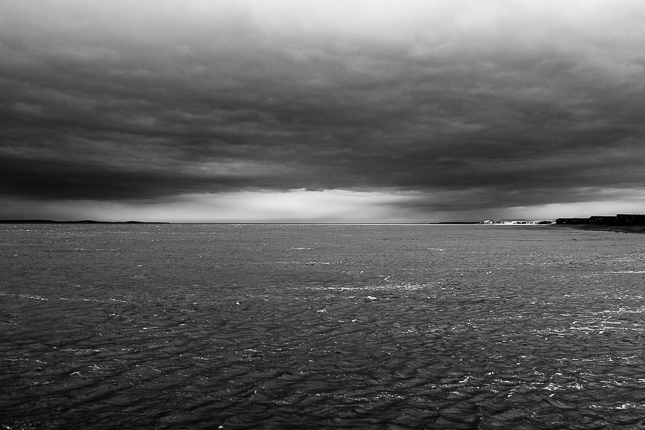 Strait of Magellan. Chile. 2017 © Leo Micieli
Strait of Magellan. Chile. 2017 © Leo Micieli
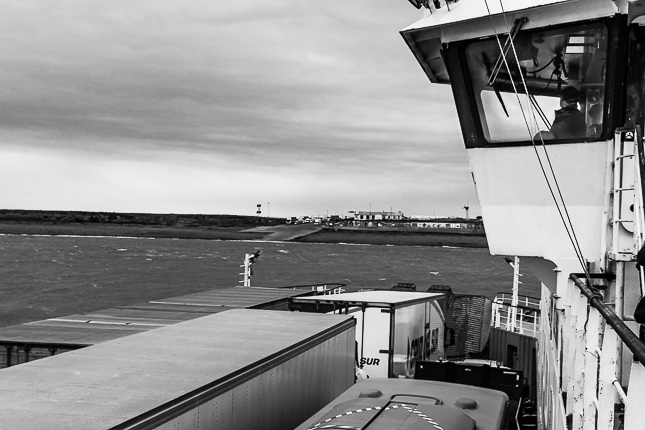 Strait of Magellan. Chile. 2017 © Leo Micieli
Strait of Magellan. Chile. 2017 © Leo Micieli
This is the narrowest part of the Strait of Magellan and it takes about twenty minutes to be crossed. It's inevitable to think about the historic importance of discovering this interoceanic passage, something that allowed the first circumnavigation of the Globe benefiting some and harming others, as it uses to happen. Humanity's avatars, nothing to do with Geography and Beauty.
The journey to the island from upstairs surrounds the trip with an icy quietness feeling, in spite of the shaken waters and the persistent wind that reigns on the Strait. Little by little the continental shore fades out from the sight, in the middle of the travel both sides of the Strait appear as two thin and irregular lines on the horizon, while the island's coast starts to appear with the vehicles that wait until they can get on board. By the sides of the boat, the greenish blue color of the water and some toninas escort the journey. The swinging and the cold air bring peace and calm during the time that the trip lasts.
Once you step on mainland, it's about 450 km left to Ushuaia. Along this distance it takes place a beautiful transition of the landscape, from the choppy sea, the steppe and the soft hills to the mountains, the forests and the bay. Like a long movie, with no actors nor dialogs, in slow motion. Godfrey Reggio's documentaries come to my mind: Koyaanisqatsi, Visitors, etc.
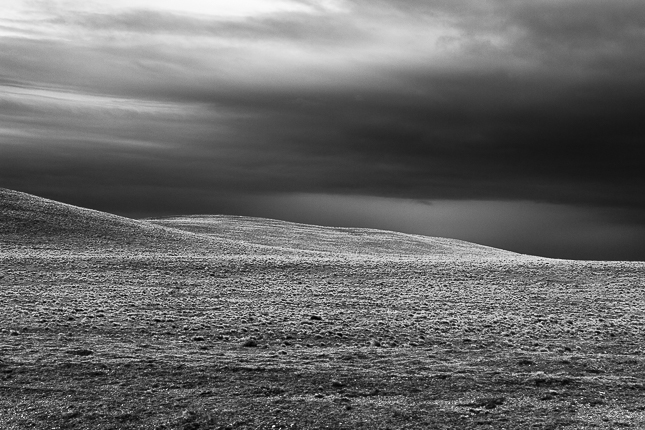 Tierra del Fuego. 2017 © Leo Micieli
Tierra del Fuego. 2017 © Leo Micieli
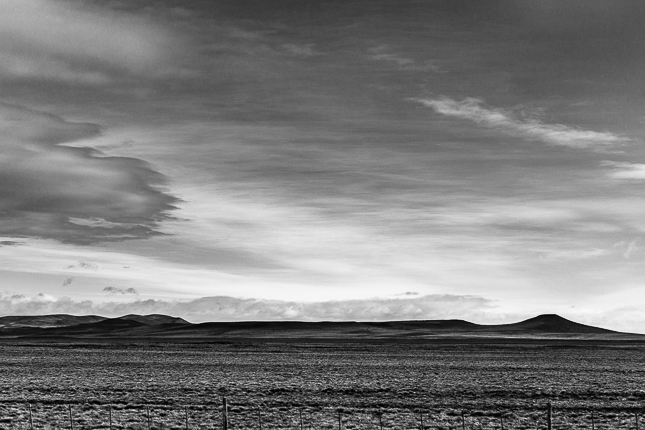 Tierra del Fuego. 2017 © Leo Micieli
Tierra del Fuego. 2017 © Leo Micieli
 Tierra del Fuego. 2017 © Leo Micieli
Tierra del Fuego. 2017 © Leo Micieli
 Tolhuin. Tierra del Fuego. 2017 © Leo Micieli
Tolhuin. Tierra del Fuego. 2017 © Leo Micieli
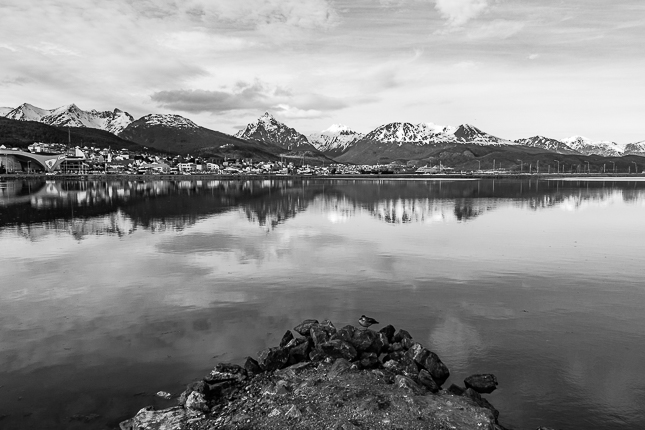 Ushuaia. Tierra del Fuego. 2017 © Leo Micieli
Ushuaia. Tierra del Fuego. 2017 © Leo Micieli
Ushuaia, the gentle bay that looks towards the West, seems to be the last hug that Nature gives to human being in the American Continent and the Southern Hemisphere. Here the longitudinal line of the Andes Mountains violently twists its direction right to the cold deep ocean, a kind of farewell as extremely beautiful as titanic. This singularity places the city on the west side of the mountains, the only place in Argentina in which it happens, something that allows to see the snowy highlands and the Southern Atlantic in where it's the port of the city. The panoramic is not complete yet. The atmosphere, the water and everything around is tinted of blue, like viewing through a crystal of that color. 'The blue city', I hear, and it's true.
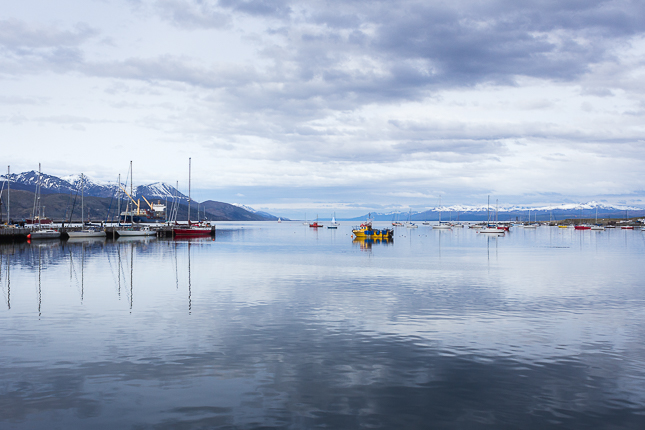 Ushuaia. Tierra del Fuego. 2017 © Leo Micieli
Ushuaia. Tierra del Fuego. 2017 © Leo Micieli
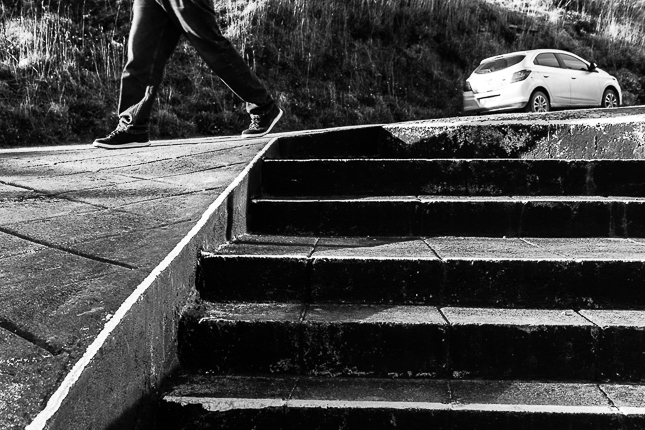 Ushuaia. Tierra del Fuego. 2017 © Leo Micieli
Ushuaia. Tierra del Fuego. 2017 © Leo Micieli
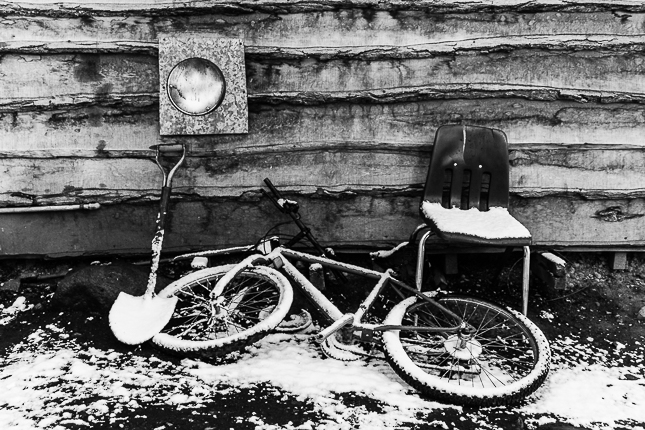 Ushuaia. Tierra del Fuego. 2017 © Leo Micieli
Ushuaia. Tierra del Fuego. 2017 © Leo Micieli
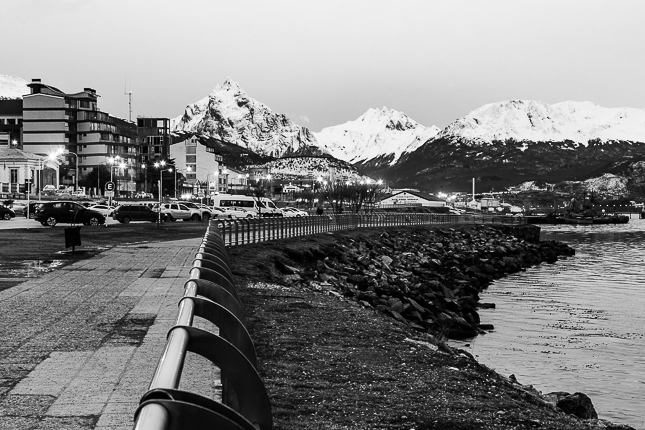 Ushuaia. Tierra del Fuego. 2017 © Leo Micieli
Ushuaia. Tierra del Fuego. 2017 © Leo Micieli
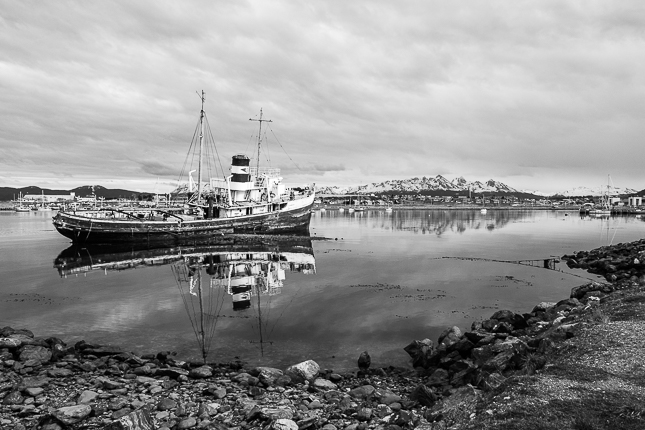 'Saint Christopher' old tugboat. Ushuaia, Tierra del Fuego. 2017 © Leo Micieli
'Saint Christopher' old tugboat. Ushuaia, Tierra del Fuego. 2017 © Leo Micieli
I arrive at the early spring, though this is only circumstantial, it could happen in any time of the year. Here nothing is like other places, seasons become one, like an eternal winter cycle that lasts the whole year and sometimes allows to feel some warm with temperatures that don't grow more than 20 degrees. In any case, seasons are concentrated within a day, in which the sun, the cold, the rain, the snow and the wind occur in a few hours and very often.
Streets and sidewalks go up and down constantly. Actually, everything is like that, like an urban zigzag in three dimensions. Stairs, ramps, curves and countercurves, entrances and exits at a different level, labyrinthic, like Escher's drawings. It's difficult to find something that is over a flat place. You have to be in good shape, physically and mentally talking. There are a lot of vehicles, in part because it's a tax-free city, but also because the ice, the snow and the mud complicate the situation. It's funny that vehicles are never clean, and if they are it lasts just a blink.
In some way it's a city that confuses your senses and your biological clock if you're not used to it. It seems that there's no middle point here, a dynamic that apparently brings balance but shakes strongly if you get distracted. The location, the weather and the modern History make it this way. Sometimes it's hard to understand how so many things occur at the same time here. It's the impossible city in which everything can happen.
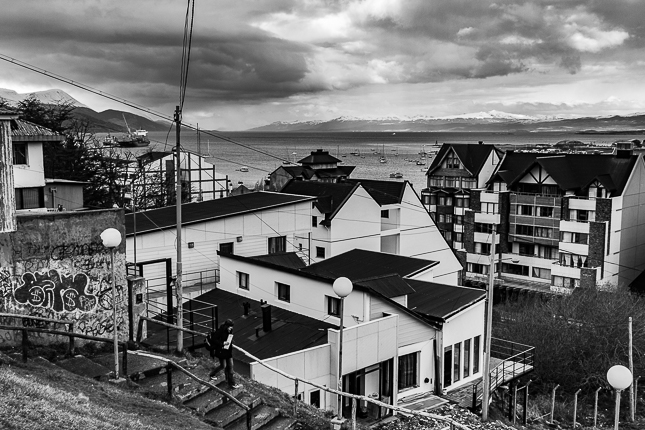 Ushuaia. Tierra del Fuego. 2017 © Leo Micieli
Ushuaia. Tierra del Fuego. 2017 © Leo Micieli
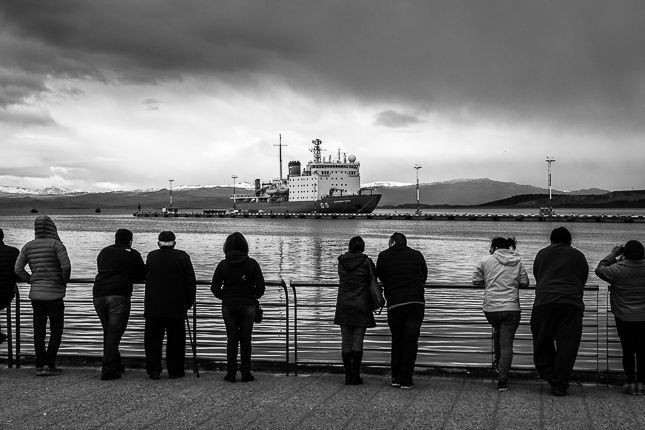 ARA Almirante Irízar icebreaker arrives to the port. Ushuaia, Tierra del Fuego. 2017 © Leo Micieli
ARA Almirante Irízar icebreaker arrives to the port. Ushuaia, Tierra del Fuego. 2017 © Leo Micieli
 Ushuaia. Tierra del Fuego. 2017 © Leo Micieli
Ushuaia. Tierra del Fuego. 2017 © Leo Micieli
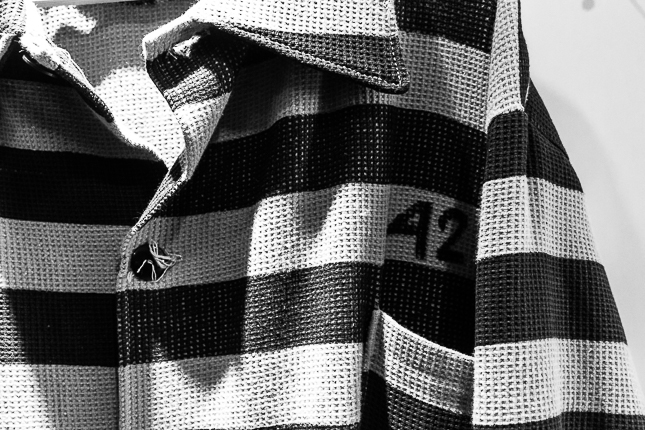 Prison uniform from the former Ushuaia Prison. Museo de la Ciudad. Ushuaia, Tierra del Fuego. 2017 © Leo Micieli
Prison uniform from the former Ushuaia Prison. Museo de la Ciudad. Ushuaia, Tierra del Fuego. 2017 © Leo Micieli
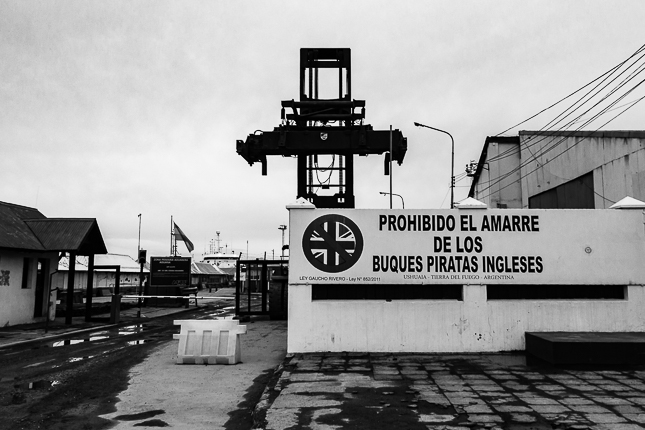 Provincial Law N°852, 'Ley Gaucho Rivero'. Prefectura Naval Argentina. Ushuaia, Tierra del Fuego. 2017 © Leo Micieli
Provincial Law N°852, 'Ley Gaucho Rivero'. Prefectura Naval Argentina. Ushuaia, Tierra del Fuego. 2017 © Leo Micieli
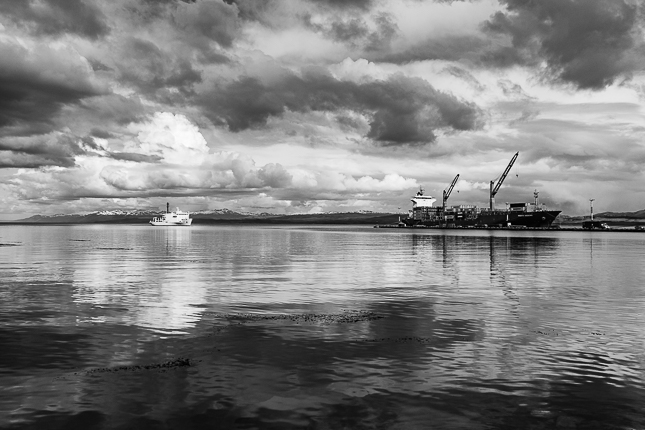 Port of Ushuaia. Tierra del Fuego. 2017 © Leo Micieli
Port of Ushuaia. Tierra del Fuego. 2017 © Leo Micieli
Ushuaia is a curious city. Cosmopolitan, eclectic, chosen by thousands of tourists all over the World and also by the authorities of the first half of the XX Century to confine dangerous or political prisoners, with days of twenty hours of light on December and twenty hours of darkness on June, hostile and kind at the same time, located in an extremely beautiful environment but crossed by some apathy in relation to urban planification in modern years, with a relatively high population density in spite of its rough weather and distance to any place in the World, culturally active, almost a guarantee in terms of finances, calmness and safeness, tax-free, but with a high youth suicide rate, something that extends to the rest of the island. On my days here I sadly witness this issue.
 Ushuaia. Tierra del Fuego. 2017 © Leo Micieli
Ushuaia. Tierra del Fuego. 2017 © Leo Micieli
It's not necessary to go too far from the city to get in contact with vastness, the kind of vastness so static and impressive that you feel that to take one more step ahead is to violate a holy place, something untouchable, even unrespectful. Everything is perfect here.
At 12 km far from Ushuaia is Tierra del Fuego National Park, in where the long National Route 3 ends at 3063 km from Buenos Aires, according to the milestone sign.
It snows the night before and in the morning. I'm standing in this end of the planet in where everything is extreme. I watch the landscape and it's like watching in black and white, colors fade away because they're not necessary, contrast is so high that it all seems like charcoal-drawn, the abrupt geography is gently painted with just a few traces.
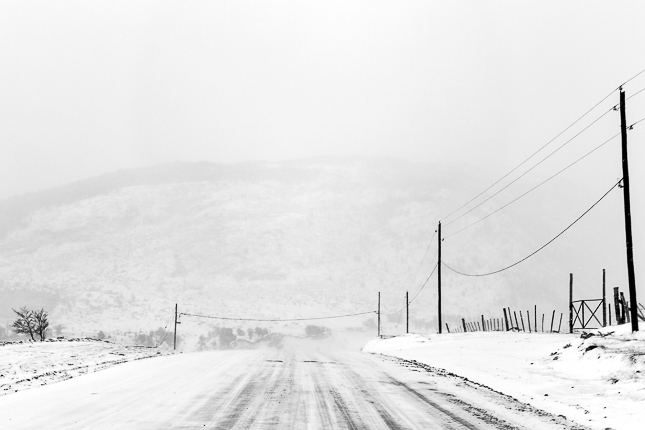 National Route 3. Tierra del Fuego National Park. 2017 © Leo Micieli
National Route 3. Tierra del Fuego National Park. 2017 © Leo Micieli
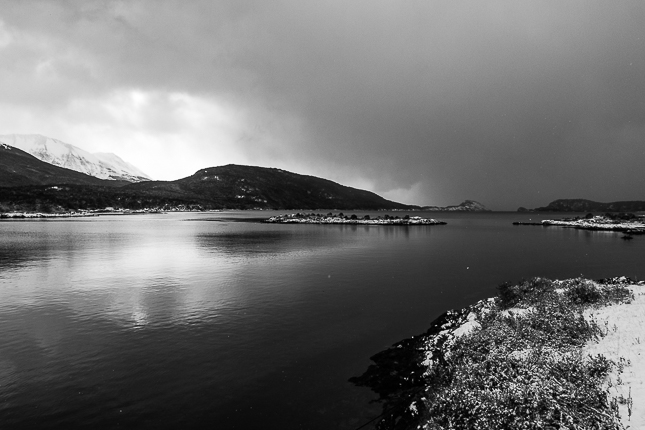 Lapataia Bay. Tierra del Fuego National Park. 2017 © Leo Micieli
Lapataia Bay. Tierra del Fuego National Park. 2017 © Leo Micieli
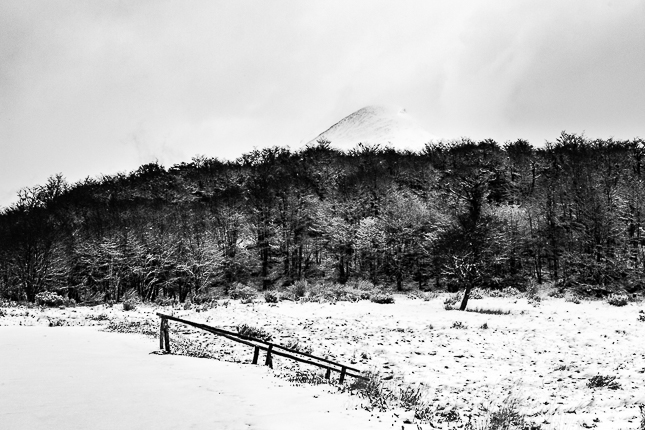 Tierra del Fuego National Park. 2017 © Leo Micieli
Tierra del Fuego National Park. 2017 © Leo Micieli
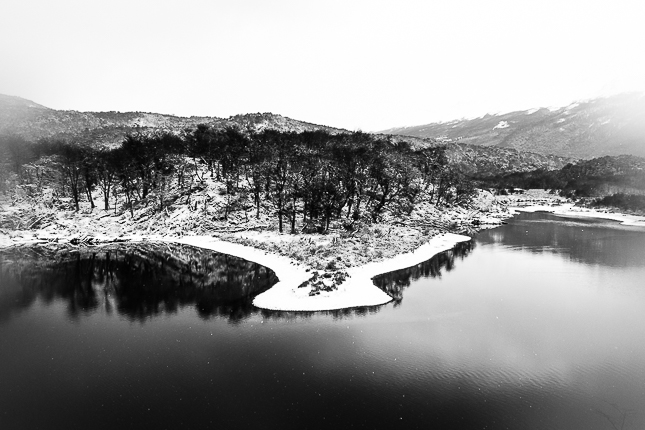 Tierra del Fuego National Park. 2017 © Leo Micieli
Tierra del Fuego National Park. 2017 © Leo Micieli
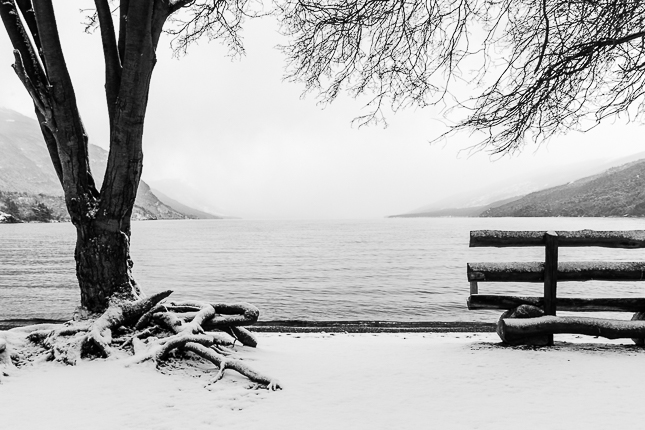 Acigami Lake, former Roca Lake. Tierra del Fuego National Park. 2017 © Leo Micieli
Acigami Lake, former Roca Lake. Tierra del Fuego National Park. 2017 © Leo Micieli
The abundance of geographic beauty around Ushuaia is huge. It would be necessary several months in order to visit lakes, glaciers, rivers and woods, and it would be even worthy to do it in other seasons of the year while the landscape changes its leaves, colors and shapes. Nature saved the best for last. The mainland ends here and what is next is the Antarctica, 1000 km further South crossing the wide, cold and bleak sea.
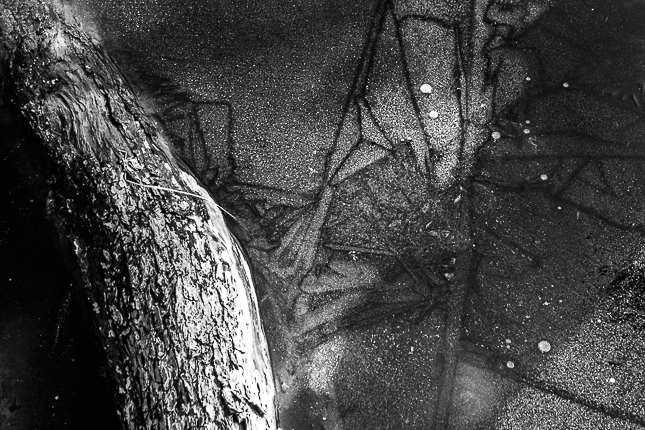 Tierra del Fuego. 2017 © Leo Micieli
Tierra del Fuego. 2017 © Leo Micieli
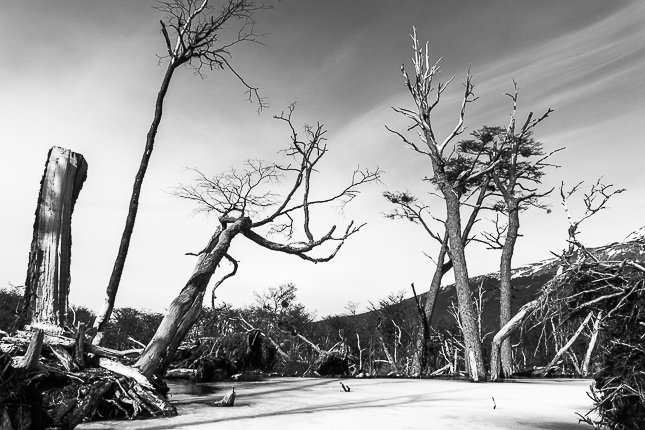 Way to Vinciguerra Glacier. Tierra del Fuego. 2017 © Leo Micieli
Way to Vinciguerra Glacier. Tierra del Fuego. 2017 © Leo Micieli
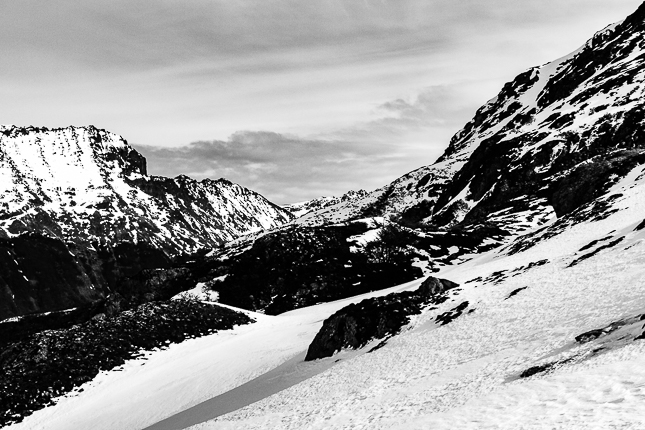 Way to Vinciguerra Glacier. Tierra del Fuego. 2017 © Leo Micieli
Way to Vinciguerra Glacier. Tierra del Fuego. 2017 © Leo Micieli
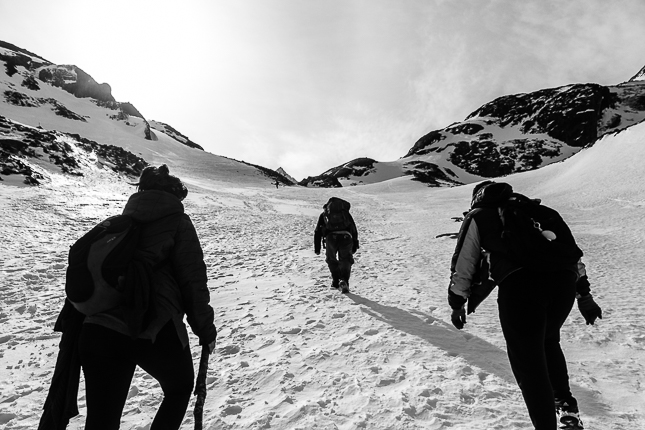 Way to Vinciguerra Glacier. Tierra del Fuego. 2017 © Leo Micieli
Way to Vinciguerra Glacier. Tierra del Fuego. 2017 © Leo Micieli
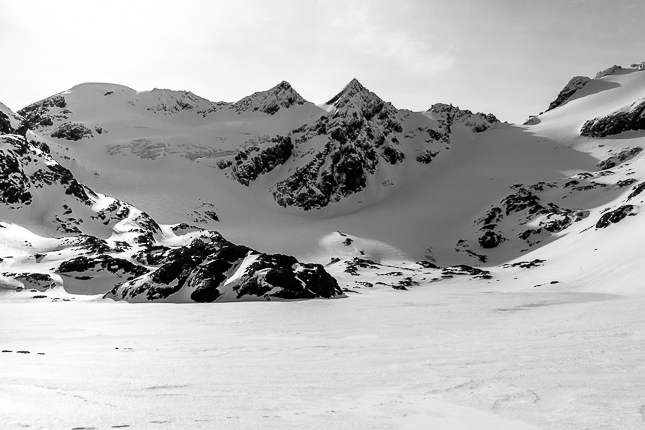 Vinciguerra Glacier. Tierra del Fuego. 2017 © Leo Micieli
Vinciguerra Glacier. Tierra del Fuego. 2017 © Leo Micieli
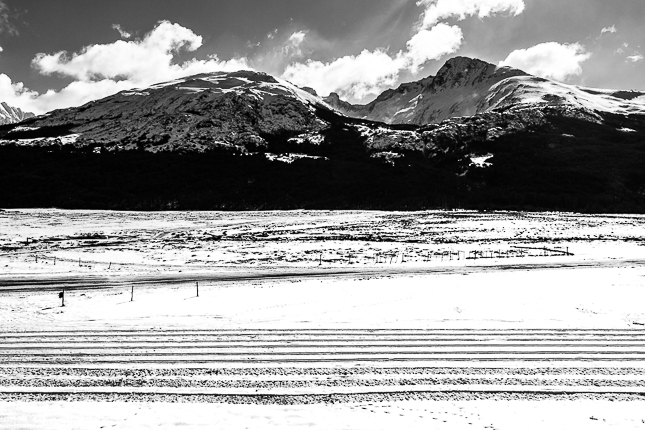 Winter Center. Tierra del Fuego. 2017 © Leo Micieli
Winter Center. Tierra del Fuego. 2017 © Leo Micieli
It's time to go back towards the North. I walked until the southernmost edge of this trip leaving at the mercy of the waters and the wind the burden on my shoulders. The wise say that any time and any place is the right one for it, a conscious choice you make from instant to instant. But this place inspires too much for not doing it.
"And then, little by little, the wider road... decidedly towards the south, in that Route 3 that ended in the point of the world; there, where Martín imagined that everything was white and frozen, that point that was bent towards the Antarctica, swept by patagonian winds, inhospitable but clean and pure. [...] remote and solitary regions of the World but clean, harsh and pure; places that seemed not to be stained by human being yet"
Ernesto Sabato, "On heroes and tombs", 1961.
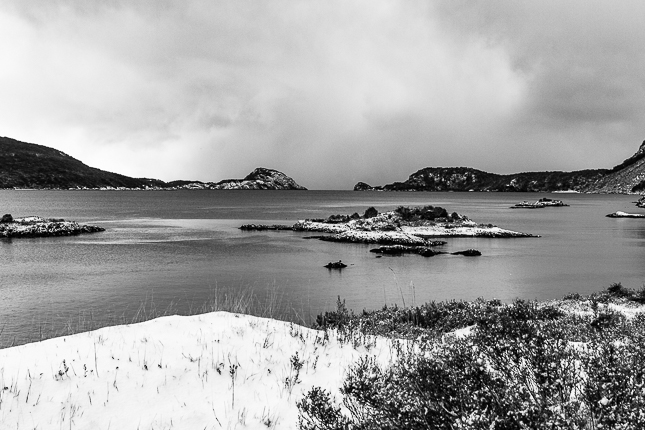 Lapataia Bay. Tierra del Fuego National Park. 2017 © Leo Micieli
Lapataia Bay. Tierra del Fuego National Park. 2017 © Leo Micieli
The only option and the only road that crosses Tierra del Fuego es the National Route 3, which skirts Escondido Lake and Fagnano Lake, known as Khami Lake by the natives. On the eastern point of this lake is Tolhuin. Halfway between the touristic Ushuaia and the industrial Río Grande, it's a little town of about 3000 people that acts as a pause on the road. Its name in selk'nam language means 'heart', and it's significant that the town is in the exact middle point of the island and the road.
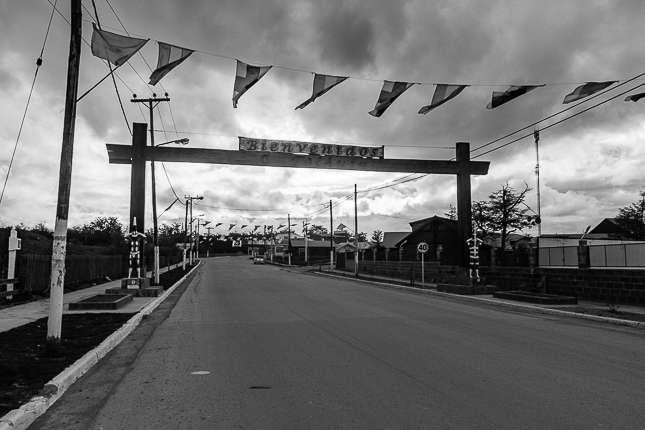 Tolhuin. Tierra del Fuego. 2017 © Leo Micieli
Tolhuin. Tierra del Fuego. 2017 © Leo Micieli
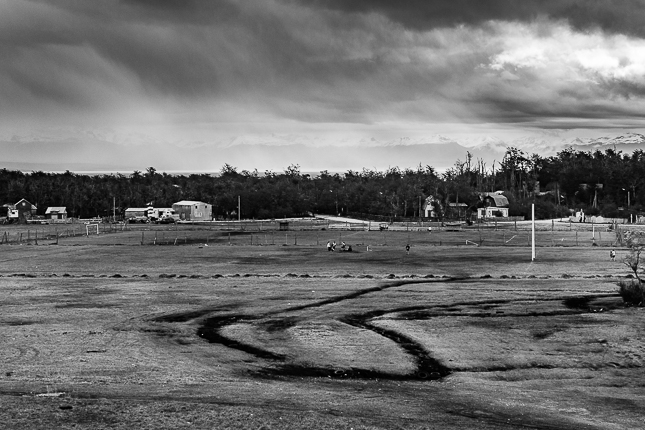 Tolhuin. Tierra del Fuego. 2017 © Leo Micieli
Tolhuin. Tierra del Fuego. 2017 © Leo Micieli
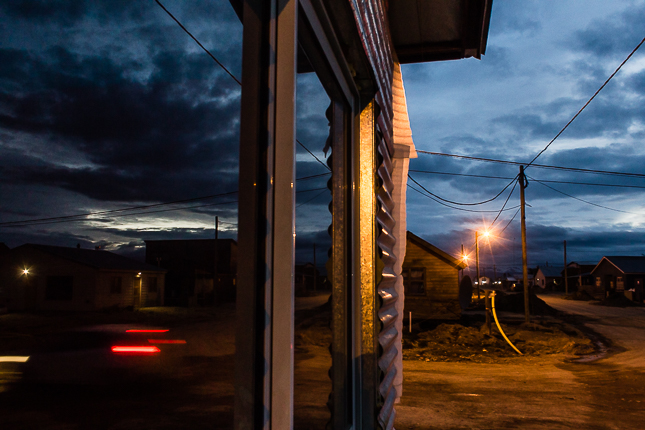 Tolhuin. Tierra del Fuego. 2017 © Leo Micieli
Tolhuin. Tierra del Fuego. 2017 © Leo Micieli
My stay here is too short. This town, although it's small, has many places worthy to visit between the Andean-Patagonian forest and the long-shaped lake.
I continue to the other city of the island, Río Grande, already knowing that the scenery will be substantially different from Ushuaia.
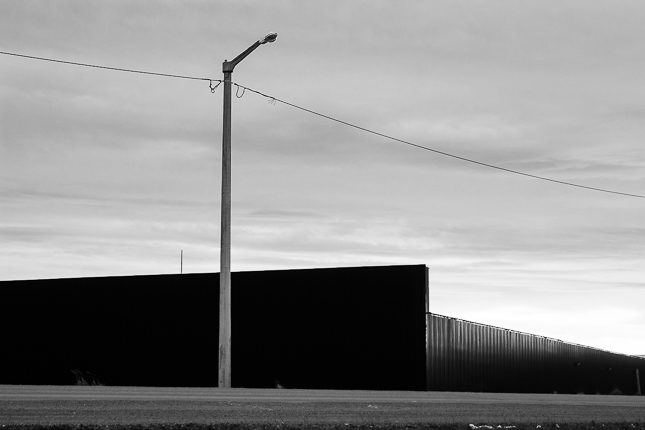 Río Grande. Tierra del Fuego. 2017 © Leo Micieli
Río Grande. Tierra del Fuego. 2017 © Leo Micieli
For "northern people", to think in Rio Grande is to refer to industries, oil and gas extraction, and TVs and appliances assembly. In fact it is, but it sounds a bit unfair that the city is tied to it. It's located by the sea and it's crossed by the homonymous river, well maintained and neat, even more that some purely touristic places, with an interesting downtown and good commercial activity, a dynamic city and not frivolous at all. It's not exuberant like other places nor it's often a touristic option, but there is more than it might be supposed.
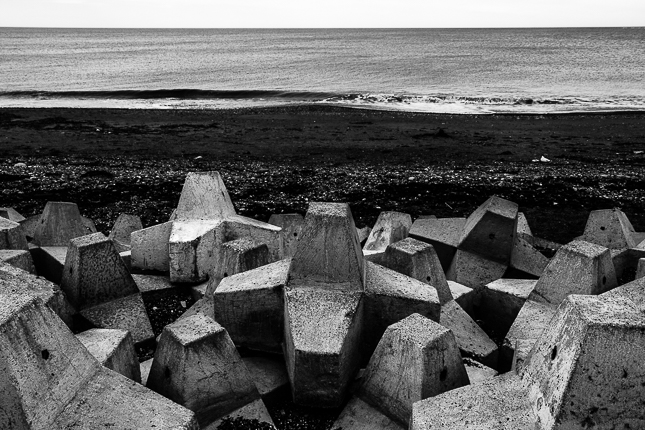 Río Grande. Tierra del Fuego. 2017 © Leo Micieli
Río Grande. Tierra del Fuego. 2017 © Leo Micieli
 Río Grande. Tierra del Fuego. 2017 © Leo Micieli
Río Grande. Tierra del Fuego. 2017 © Leo Micieli
 Río Grande. Tierra del Fuego. 2017 © Leo Micieli
Río Grande. Tierra del Fuego. 2017 © Leo Micieli
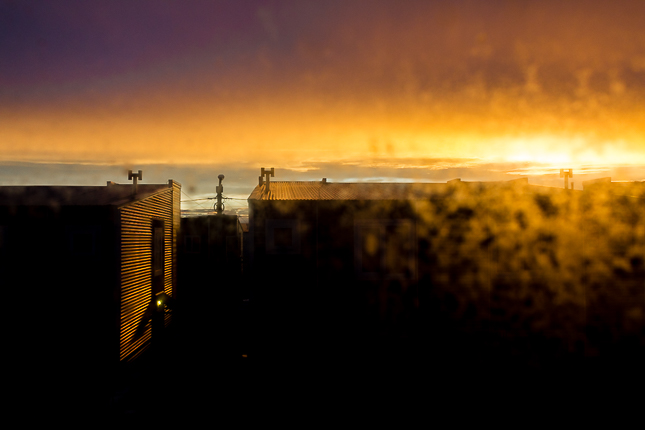 Río Grande. Tierra del Fuego. 2017 © Leo Micieli
Río Grande. Tierra del Fuego. 2017 © Leo Micieli
It's placed on the steppe, the plain and low plateaus, dry weather and low vegetation. A completely opposite environment, and in some point more hostile than Ushuaia though it's evident the effort in order to counteract the roughness of the weather and wind. Sunsets use to be beautiful, dyed with warm colors that light up the last hours of the day.
Straight and geometric shapes get filtered throughout the city's physiognomy: the urban design, the buildings and neighborhoods, the factories. Perhaps the industrial nature influences on the city all the time, but also its geographical aspects do.
In addition, the successive waves of workers from other parts push to think about housing containment before the demographic explosion, and the solution must be practical. Geometry solves this problem.
 Río Grande. Tierra del Fuego. 2017 © Leo Micieli
Río Grande. Tierra del Fuego. 2017 © Leo Micieli
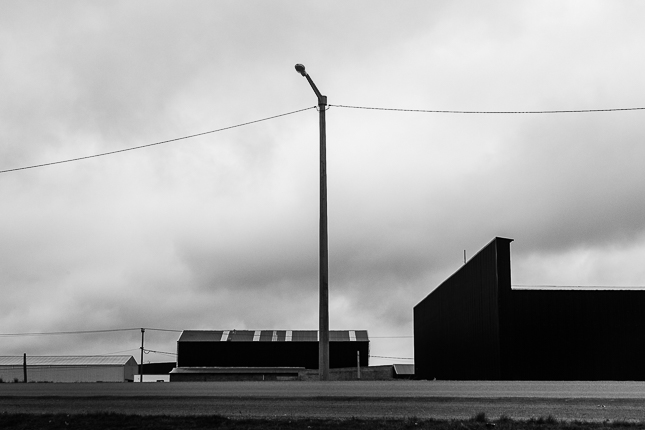 Río Grande. Tierra del Fuego. 2017 © Leo Micieli
Río Grande. Tierra del Fuego. 2017 © Leo Micieli
 Río Grande. Tierra del Fuego. 2017 © Leo Micieli
Río Grande. Tierra del Fuego. 2017 © Leo Micieli
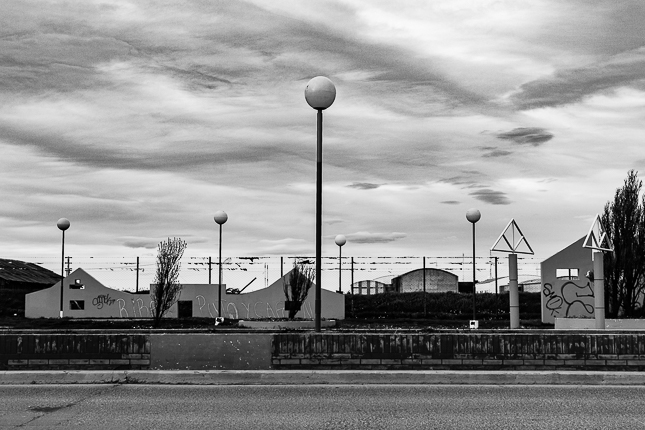 Río Grande. Tierra del Fuego. 2017 © Leo Micieli
Río Grande. Tierra del Fuego. 2017 © Leo Micieli
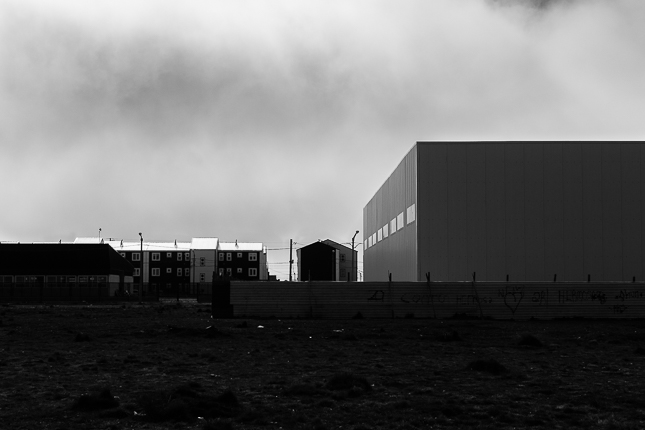 Río Grande. Tierra del Fuego. 2017 © Leo Micieli
Río Grande. Tierra del Fuego. 2017 © Leo Micieli
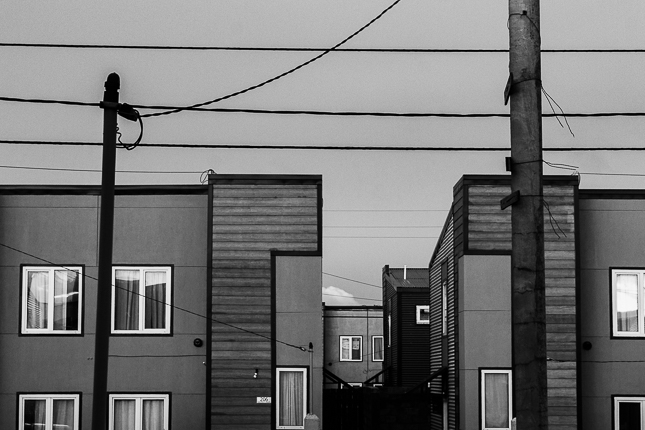 Río Grande. Tierra del Fuego. 2017 © Leo Micieli
Río Grande. Tierra del Fuego. 2017 © Leo Micieli
The specific aspects of each place, the characteristics that affect them, the beauty and the harshness, the History, Geography and weather, the social, political and economical behaviors, the ways of life or avatars of any type, represent just the framework in which it takes place something constant and wider and deeper, but more subtle, which after all is and has been the axis of this trip. It's better to keep track on it, especially for a traveler who beforehand knows that every trip is a one-way trip, carrying on his shoulders the backpacks, the real ones and the symbolic ones, the ones that tell his own story. On this scenery, life happens with its circumstances, which are always uncontrollably but not necessarily chaotic. Certain concepts transform their meaning, adopt other forms, some become useless and it's necessary to get rid of them, but at the same time some new ones start to appear and take the place left by the old ones. It's like when you are a child and as you grow up you need bigger shoes because the old ones don't and won't fit you anymore. This is all about: growing up.
Here, on this island, circumstances simplyfied until the minimun expression. It's better this way because the elementary, the bigger virtues and fears, the most extreme human facets, the life and death came all up, and I'm being literal. The people, all of them crossed by the same emotions that make to think that there's nothing or nobody that is separated from what surrounds them, though it may seem so. Someone unknown lends you a hand, and afterwards another hand from another unknown person, and many hands around you take your own hand so you can confirm that solitude is just an illusion, even when you cannot see noone.
Tierra del Fuego (Land of Fire). Now I realize that its name contains the elements that bring soil and warm. The other two are not in its name, but they exist out there, just for us to know that Life is about balance between what has been chosen and what has happened.
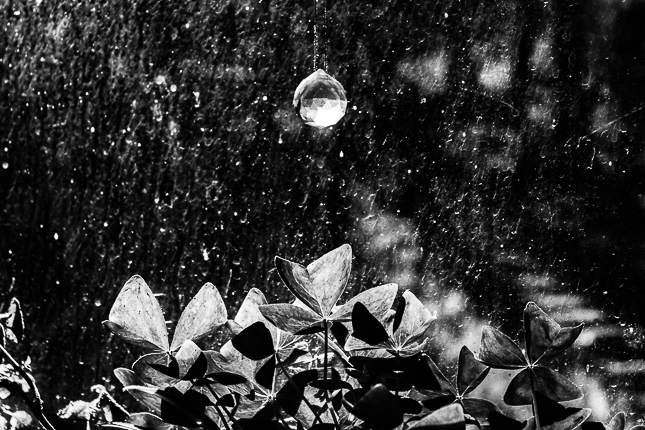 Ushuaia. Tierra del Fuego. 2017 © Leo Micieli
Ushuaia. Tierra del Fuego. 2017 © Leo Micieli
Manu (07/02/2018)
Quedo sin palabras como si quedara sin respiración ante tan magna y brillante obra, mi queridísimo Leo. Gracias. Sólo resta agradecerte que nos legaras este trabajo más que admirable. Te abrazo, amigo mío!!
Ohhhhh :) muchas gracias por tanto que me decís, hermano querido! Ahora me quedo yo sin palabras. Me encantaría que compartiéramos unas buenas charlas con todo lo vivido por tu parte y por la mía en estos años que no nos vemos. Abrazo enorme, my friend!!!
Daniel (08/02/2018)
Excelente...
Gracias Daniel!
Km 30-100 - First impressions in Patagonian Coast
Km 100-410 - The sea
Km 410-3650 - 'Stop, look, listen'. (Part 1/2)
Km 410-3650 - 'Stop, look, listen'. (Part 2/2)
Km 3650-4190. Puerto Madryn - Puerto Pirámides - Bird Island
Km 4190-4710. Trelew-Comodoro Rivadavia-Caleta Olivia
Km 4710-5750. Coast of Santa Cruz. (Part 1/2)
Km 4710-5750. Coast of Santa Cruz. (Part 2/2)
Km 5750-6960. Tierra del Fuego
Km 6960-8800. West of Santa Cruz.
Km 8800-9670. San Jorge Gulf Basin.
Leave a Reply